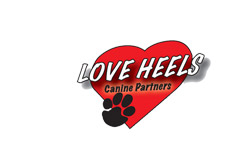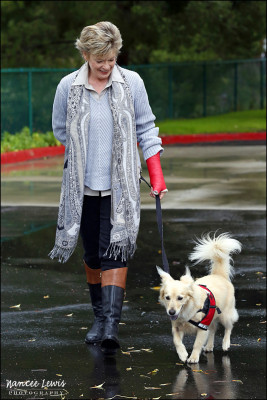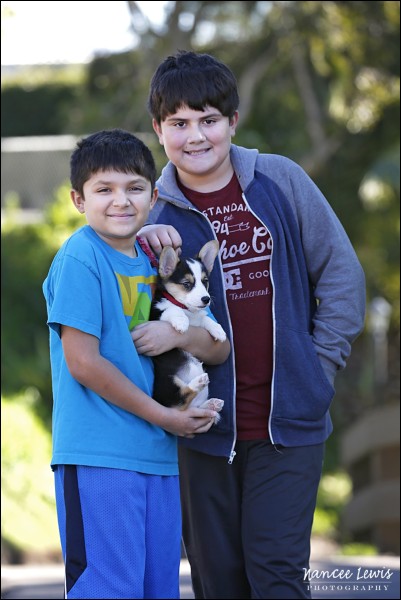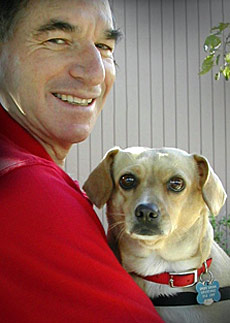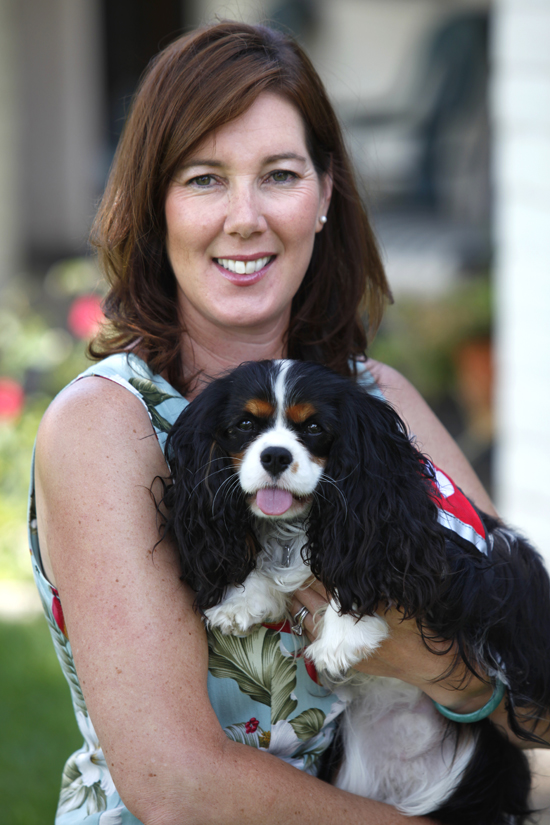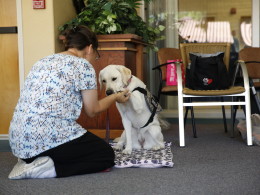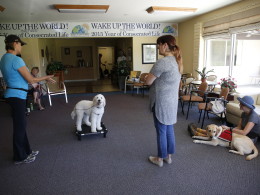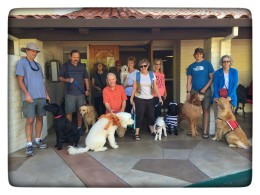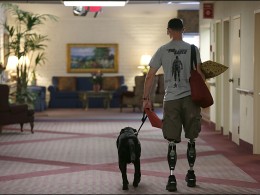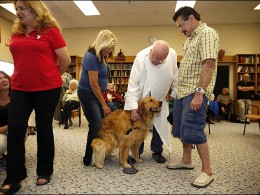Six Things I Wish Every Dog Walker Knew about our Autism Service Dog
A recent walk with dog and boy at a popular Encinitas walking trail got me thinking about a popular book series by Ellen Notbohm and Veronica Zysk that started with this title: “Ten Things Every Child with Autism Wishes You Knew.”
After an incident with a woman with an unleashed dog, I thought it was time for me to write “What I Wish Every Dog Walker Knew about our Autism Service Dog.”
What happened was this: Dancer, who is not yet 2 and is working on not interacting with dogs on the trail when wearing her vest, was in a down-stay in between my legs as far off the path as we could get. Zander and I held her leash. I repeated the mantra Patricia taught me for these situations, “Leave it, it’s not time to play now.” Still, the woman allowed her dog to approach mine as she asked, “Is your dog friendly?”
Dancer barked. Zander yelped. I swallowed my inclination to snap, “Can you not read social cues?” and said, “She can’t play, she’s working.” (OK, maybe my extra-wide eyes did say, “Duh …”)
Over the rest of the walk, I formulated my list of “What I Wish Every Dog Walker Knew About our Autism Service Dog.” Here goes:
1. When my dog is wearing her red service dog vest, she’s working. Whether she’s with my son or training with just me, her job as a service dog is to serve her people. That means she has to pay attention to us. So she cannot play or interact with your dog.
2. When I say, “Leave it, it’s not time to play,” I’m saying it for your benefit and your dog’s benefit as well. The alchemy of dogs is mysterious and unpredictable to us mere humans. We can’t always tell when one will feel threatened. I can’t risk a bad interaction, or even a positive one. If Dancer gets pulled off to romp and play, her attention in pulled away from her people. I really appreciate it when people hear my mantra and repeat it to their dogs.
3. I really wish you’d follow the rules, written and unwritten. Signs throughout the trail we were on state, “pets must be leashed.” The rules are there for a reason. Parts of this trail are narrow. Having your dog unleashed puts my leashed dog at a disadvantage in the world of doggy power grabs. Also, my mom taught me to walk against oncoming traffic on streets without sidewalks. I’m teaching Zander the same unwritten rule. When you walk your dog toward mine, you force my hand. I have to cross to the opposite side of the street because I can’t risk an interaction. That undoes the lesson I’m teaching my son. So, please, next time, you be the one to cross the street.
4. I’m not being rude. I’m not being mean. I’m keeping everyone safe. Like many people with autism, Zander has motor planning issues and poor balance. (We have a collection of walking casts and arm braces to prove it.) If Dancer pulls, Zander can topple and we could quickly be visiting our “friends” in Orthopedics. I’ve gotten rolled eyes and indignant looks from dog owners when I’ve told them, “I’m teaching her not to interact with dogs when she’s in her vest.” I’ve even been told, “Good luck with that.” I appreciate your understanding, not your sarcasm.
5. Whether you are with your dog or not, don’t pet or interact with my dog in her vest without asking. Teach your kids to do the same. Dancer and I walk Zander into school every morning. The kids know Dancer is a helper dog and ask, “Is it OK to pet your dog today?” Some mornings, I want Dancer to be a kid magnet to help Zander interact with his peers. Some mornings, he just wants to be alone. We need to respect that.
6. Not all service dogs are seeing-eye dogs. An older gentleman we see at school assumed Zander was blind because of Dancer. Service dogs have expanded their careers beyond helping people with vision and mobility issues. Some alert their humans to oncoming seizures or drops in blood sugar. Others help vets with PTSD. Dancer helps Zander with his autism. If you’re curious and the handler can’t answer your questions, scan the dog’s vest for the service agency’s name and check out their website or read up on the new roles of service dogs.
Number 6, I think, needs some more explanation. So, I will give my list of the things our autism service dog does for our son in an upcoming post.
What do you think of this list? Anything you wish other dog walkers knew?
